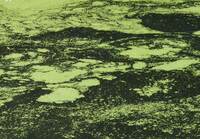The appendix contains a list of Environmental Impact Design Questions which summarise the book's content. The questions can be used by community groups and planners to help carry out an Environmental Audit of the relationship between a new project and the existing environment. Environment is used to mean surroundings. For clarity, the questions are terse.
It is a characteristic of landscape planning that the aims, because of their long-term nature, can be attained only in part: the land existed before homo sapiens evolved and will continue to exist when our species is extinct. Each landscape plan is for a small intervention in an endless process. We make footprints in the sands of time. No end-state can be known or planned. The background to this approach is summarised in the first chapter of this book and discussed at greater length in a set of essays on City as Landscape (Turner 1996).
The term Environmental Impact Design, as used in Part 2, embraces Development Control, Design Control and Impact Mitigation. "Environmental Impact Design" was chosen as the heading for several reasons; it is broad; it covers modifications to both urban and rural projects; it does not have the unfavourable connotations of the other labels: 'Development control' suggests an anti-development bias; 'Design Control', like 'Aesthetic Control' suggests an over-emphasis on visual matters and a regulatory approach to creativity; 'Impact Mitigation' suggests we can but fiddle while Rome burns.
It is difficult for statutory plans to deal with the long-term and high-level concepts which should lead and inspire the planning process: beauty, harmony, composition, sustainability, health, spirituality. Landscape Planning can and must deal with these concepts. Environmental Impact Design is too detailed for public authorities to carry out on their own. It requires joint working between the public, land owners and professionals. Only those who use and study individual parcels of land can gain a full appreciation of the potential. Environmental Assessment procedures must, therefore, be integrated with Land Use Planning procedures.
So does the planning of good landscapes require new laws, new bureaucracies and new taxes? No. Most of the developed countries have sufficient legislation on their statute books. They should continue with environmental protection, which is the husbandry of a diminishing resource, but they should acquire more skill in the art of environmental improvement, which can create valuable public goods.





